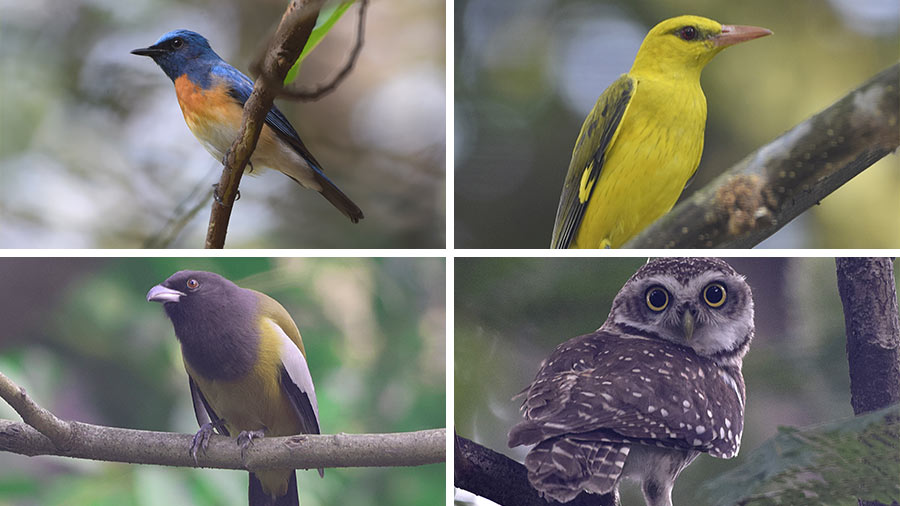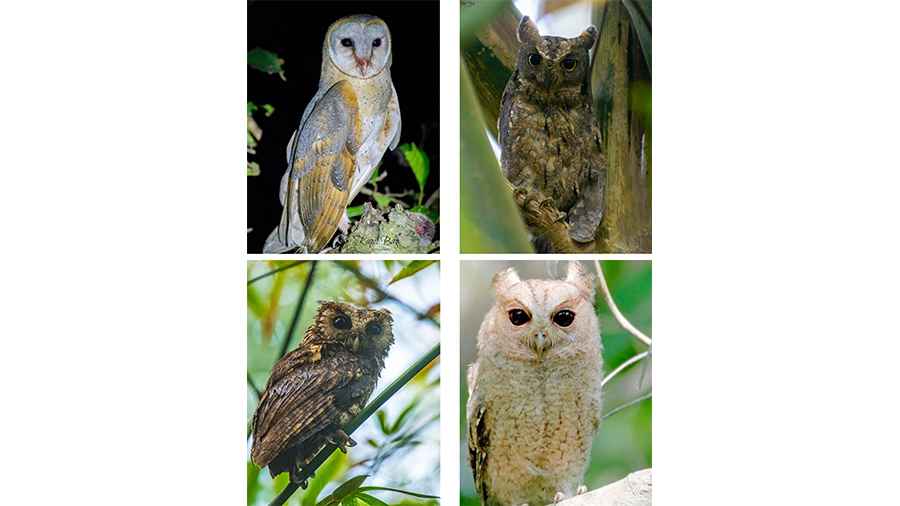There has been a noticeable rise in the number of bird photographers in Kolkata and West Bengal.
The advent of digital cameras has boosted this fraternity and the output is evident. Social media is flooded with some stunning images. Simultaneously, there has also been a rise in unethical practices. People bait birds with food, some play calls to attract them and there are many who do not mind destroying their habitat in order to get close, just for the sake of a clearer shot.
The Poila Baisakh Bird Count — a first of its kind two-day event to collect data on birds, their behaviour, movement pattern — aims to discourage this sort of practice. That’s not the only objective, but a prominent one of this initiative undertaken by the Birds Watchers’ Society, supported by the Bird Count India and eBird India. These are voluntary organisations which promote the habit of watching birds, collecting information and conducting some sort of a census.
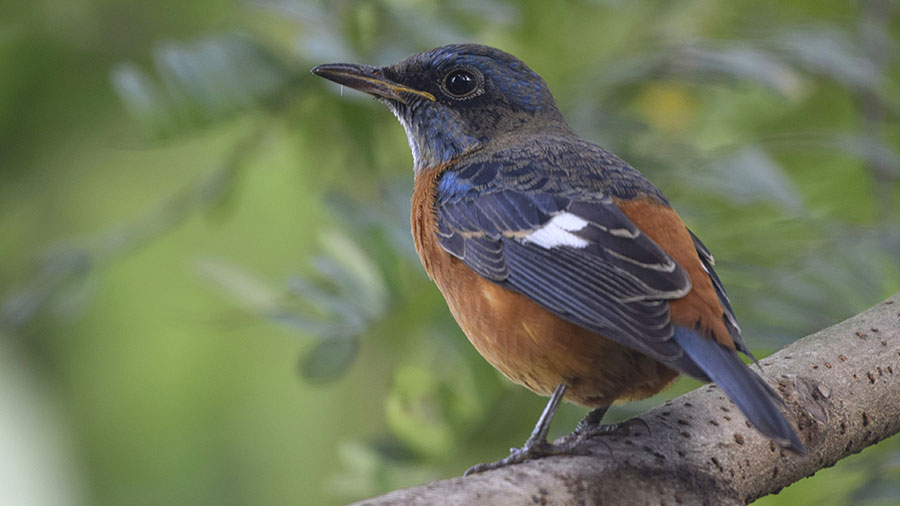
A blue-capped rock thrush, at Rabindra Sarobar
It started on Saturday in different parts of the state and will conclude on Sunday. Nearly a thousand are expected to take part, including people from all walks of life and age groups. This kind of an exercise is not new in India but a state-wide two-day event like this is not common. West Bengal is India’s richest state in terms of bird species seen, according to eBird, one of the world’s most authentic databases on birds. Of nearly 1,350 varieties found in the country, 865 are seen in the state. Arunachal Pradesh comes second with 734 and Assam stands third with 715.
“The geographical diversity of West Bengal makes this possible. From the sub-Himalayan areas of north Bengal to the mangrove regions of southern Bengal, there are numerous kinds of habitats. There are grasslands, coastal regions and a lot more. This makes the state a hotspot for a wide variety of residential and migratory birds. And in the last few years, the effort to list and study them in an organised manner has gained a lot of impetus. The Poila Baisakh Bird Count is a result of that,” said Dr Kanad Baidya, a founder member of the Bird Watchers’ Society.
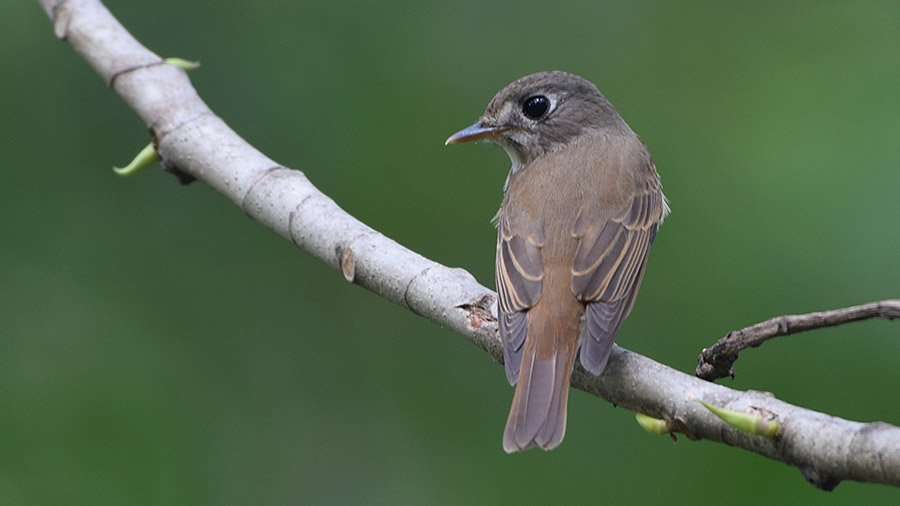
A brown-breasted flycatcher
A gynaecologist at North Bengal Medical College in Siliguri, he is also keen to arrest the disturbing trends. “We have noticed that a lot of people have taken to bird watching just for the sake of taking photographs. Taking pictures is an integral part of the practice of watching birds scientifically, but not an end in itself. We have seen people do all sorts of things just to get a good image and share it on social media for ‘likes’. This is not the way to go about it. Through the Poila Baisakh Bird Count we want to spread awareness and discourage bad habits.”
Rabindra Sarobar is a stunning place when it comes to watching birds of rare kinds in the heart of Kolkata. Going by documentation, nearly 130 species have been sighted there, which is nearly 10 per cent of what is seen in the country. That’s a stunning number. Birds from north Bengal come here during winter on their way to warmer regions further south and also halt on their way back. This makes it a paradise for bird watchers who otherwise have to spend a lot to go to distant places to see these birds. Even over there, some unwelcome practices have been seen, like playing calls and crushing underfoot the habitats of certain kinds of birds just to get closer for a better shot.
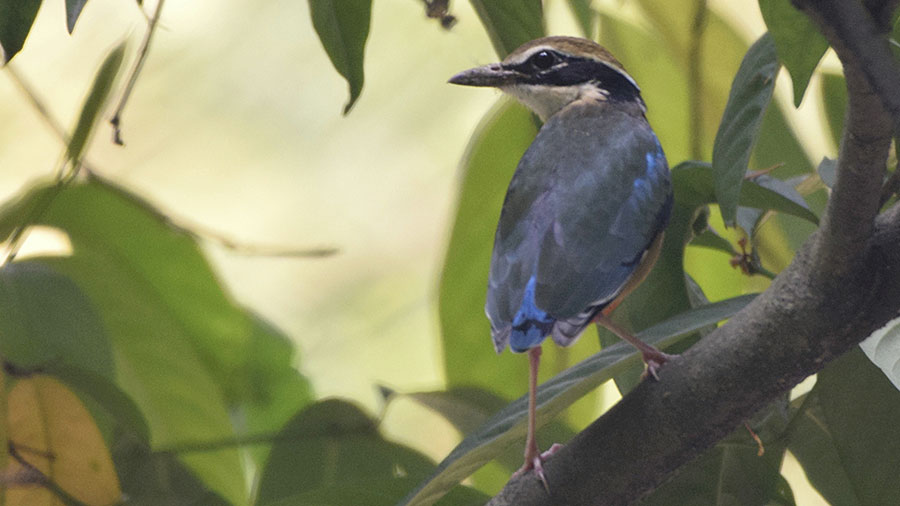
An Indian pitta
The results of the Poila Boishakh Bird Count will be out after April 30, after the data is tabulated and verified. Many species will be seen for sure and there will also perhaps be some newcomers who will go on to become serious bird watchers in future. It will be great for the birds and as well as those who spend hours to see them. The real objective will be achieved if the malpractices are stopped. See them but do not make it an enterprise to get yourself noticed. A message this bird count wants to spread.
